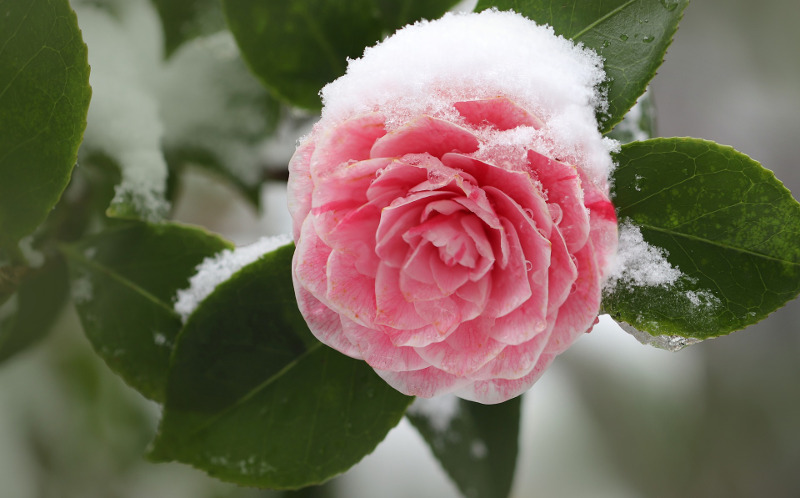Camellias are evergreen shrubs that can happily overwinter in their preferred USDA zones of 7-9. Outside of those ranges, you will have to either bring the plants indoors to grow them, or provide extra protection. Even with extra protection, it still may be difficult to keep the plants alive in harsh winter climates. Here are a few of our favorite products to protect plants in the winter if you choose to try that route.
Cutting Back Camellia for Winter
Camellias don’t need pruning unless they’ve overtaken their allotted spot in your yard, or if their growth is too thick on the interior, which can welcome disease. If so, the usual time is right after flowering, which might be late winter or spring depending on the variety. Since they are evergreen, they don’t go dormant or need pruning to prepare for winter.

Camellia Winter Care in Pots
If you are gardening in zones 7 or colder, camellias in pots may need protection from freezing wind. The smaller the pot is, the less protection your camellia’s roots will have. Mulching the soil surface of your potted camellia is a good idea - use organic matter such as bark chips or pine needles. For extra protection in colder zones or if a cold snap is expected, you can create a wind buffer for your plant with chicken wire surrounding with an optional burlap or canvas wrap and fill it with leaves.
Watering Camellia in Winter
Camellia like a delicate balance between regular watering and having air around their roots. So, it’s more important not to over-water your camellia, especially if your area has very rainy winters. An exception would be if the forecast promises a string of cold weather – then it’s wise to make sure your camellia – whether potted or in the ground – is well-watered. That will help keep the roots from freezing.
Potted camellias will need more frequent watering than those planted in garden beds. Your schedule will vary based on your weather, but the basic answer is: keep your camellia lightly watered throughout the winter, except for cold snaps – make sure you give it a watering right beforehand.

Growing Camellia Indoors
Camellias in very cold areas, such as zones 5 and below, can be brought indoors, but will require specific conditions to bloom that may not be easy to replicate without a greenhouse.
In addition to preferring consistent moisture, camellias need temperatures between 32 and 60 degrees Farenheit to set blooms, so you may need a greenhouse with ventilation or a dedicated temperature zone to offer your plant.
The time of budding and blooming, usually late winter or spring, does not need fertilization for an indoor camellia. Other times of year the best type would be one made for acidic soils, such as those labelled for azaleas, camellias and rhododendrons. Use at a low dilution indoors.

Steps To Care For Camellia in Winter
Step 1 - Amend soil with compost, mulch with organic matter, keep evenly watered, but not soggy.
Step 2 - Protect potted plants with mulch, and optional burlap and leaves depending on your area’s temperatures
Step 3 - Before a cold snap, check that your plant is well-watered.
Step 4 - Hold any pruning until after bloom.
 |
Author Erica Browne Grivas - Published 11-16-2021 |
